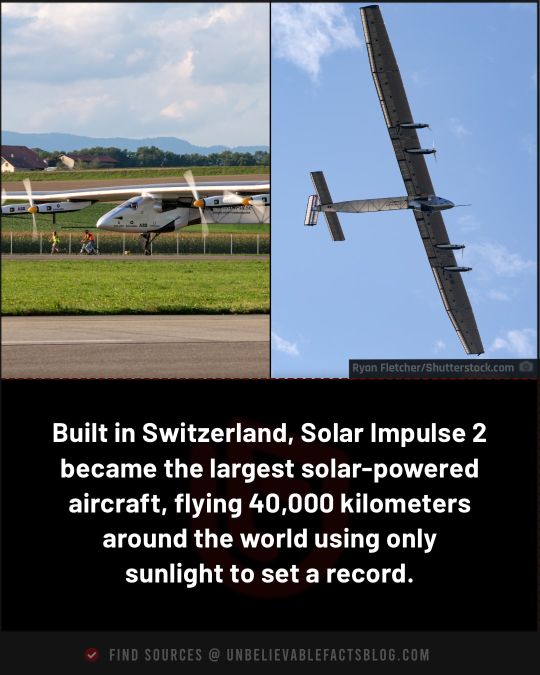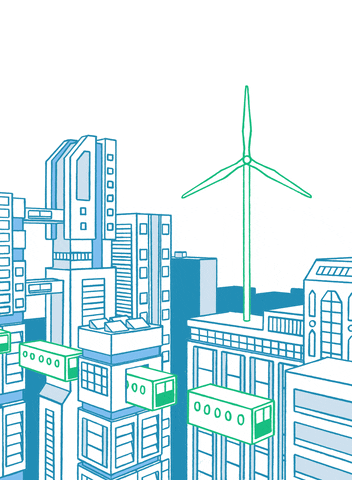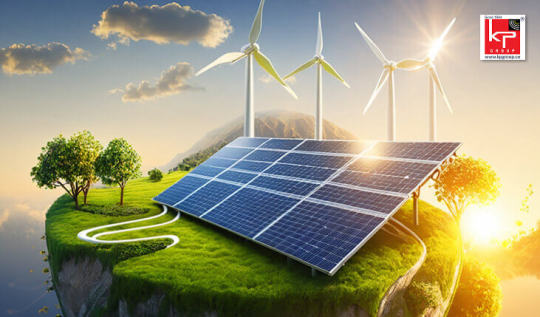#Renewable Energy Technologies
Explore tagged Tumblr posts
Text
⚡ Powering Tomorrow: Emerging Trends in Renewable Energy Technologies
As the global climate crisis intensifies, the demand for cleaner, smarter, and more sustainable energy sources has skyrocketed. Renewable energy technologies are no longer optional—they are essential. From solar to wind, and from biomass to green hydrogen, innovations in this field are powering not just homes and cities, but also the future of the global economy.
If you’re passionate about energy, environment, and engineering, this is the right time to consider a future in renewable technologies. Pursuing an M.Tech in Renewable Energy can help you build the skills needed to lead in this evolving sector.
🌱 Why Renewable Energy Matters Now More Than Ever
The urgency to switch to renewable sources is being driven by:
Global carbon reduction goals (Net-Zero targets)
Depletion of fossil fuel reserves
Energy access needs in rural and underserved regions
Cost-effectiveness and scalability of clean technologies
Countries worldwide are investing heavily in renewable infrastructure, and the sector is projected to generate over 30 million green jobs globally by 2030.
🔍 Emerging Trends in Renewable Energy Technologies
1. Green Hydrogen
Hydrogen, produced using renewable electricity, is emerging as a game-changer for decarbonizing hard-to-electrify sectors like steel, shipping, and aviation.
2. Energy Storage Solutions
The rise of grid-scale battery storage—including lithium-ion, solid-state, and flow batteries—is solving the intermittency issue of renewables like solar and wind.
3. Smart Grid Integration
With the help of IoT, AI, and machine learning, smart grids optimize energy distribution, improve reliability, and enable efficient integration of decentralized sources.
4. Floating Solar Farms
These floating installations not only save land space but also enhance energy efficiency by cooling the panels with the water beneath.
5. Waste-to-Energy Technologies
Organic waste is now being converted into electricity and fuel using anaerobic digestion, biomass gasification, and other clean processes.
🎓 Academic Pathways for Future Renewable Energy Experts
To become a leader in this domain, an advanced academic foundation is essential. Programs like the M.Tech in Renewable Energy at Maya Devi University are designed to cover core subjects like:
Renewable energy systems design
Solar and wind power engineering
Grid integration and storage
Sustainable energy policies
Students also get hands-on experience through research projects, labs, and industrial collaborations.
🧠 Skills You’ll Gain
Studying renewable energy doesn’t just build technical expertise—it sharpens your:
Problem-solving abilities
Environmental ethics
Project management skills
Policy and regulatory awareness
Innovation mindset
These skills are highly valued in both the public and private sectors, including multinational corporations, government agencies, and energy startups.
🚀 Career Opportunities After M.Tech in Renewable Energy
Graduates can explore careers such as:
Renewable Energy Project Engineer
Sustainability Consultant
Solar PV System Designer
Energy Policy Analyst
Smart Grid Developer
Research Scientist
ESG (Environmental, Social & Governance) Specialist
Some roles may also require clearing relevant entrance exams or qualifying for fellowships if you're eyeing a research or academic route.
💡 Conclusion
The future is renewable—and it's already here. Whether it's improving energy access or reducing carbon footprints, renewable energy technologies are central to the future of sustainable living.
By equipping yourself with a specialized degree like M.Tech in Renewable Energy, you're not just investing in your career—you're investing in the planet.
Get ready to power tomorrow, today.
0 notes
Text
The world is currently undergoing a significant transformation in the way we generate and consume energy. As the global climate crisis intensifies and the need for sustainable solutions becomes more pressing, renewable energy technologies have emerged as a beacon of hope for a cleaner, greener future.
0 notes
Text
How Eco-Tech is Transforming the Future of Green Energy
Introduction
Eco-tech encompasses a broad range of technologies that contribute to environmental conservation and the efficient use of resources. From solar panels to wind turbines and smart grids, eco-tech is at the forefront of the green energy revolution. This blog post will delve into the various ways eco-tech is revolutionizing green energy and shaping a sustainable future. Read to continue link
#Eco-Tech#Tagsadvanced battery technologies#clean energy solutions#eco-friendly technology#eco-tech#electric vehicles#energy storage solutions#government green energy initiatives#green energy#green transportation#hydropower innovations#international green energy agreements#marine energy technologies#renewable energy technologies#smart grids#smart wind farms#solar power advancements#solar storage solutions#sustainable energy#sustainable future#wind energy innovations#Technology#Science#business tech#Adobe cloud#Trends#Nvidia Drive#Analysis#Tech news#Science updates
1 note
·
View note
Text
Renewable Energy Technologies Drive Decarbonisation Efforts

Renewable energy technologies utilize renewable sources such as sunlight, wind, rain, tides, plants, algae and geothermal heat. Some of the common renewable energy technologies include solar photovoltaics that generates electricity from sunlight through solar panels, wind turbines that convert kinetic energy from wind into electricity, hydropower plants that uses power of falling or flowing water to generate electricity and biofuels such as ethanol and biodiesel that are produced from organic matter or wastes. These technologies are increasingly being adopted for power generation and transportation fuel owing to environmental benefits. The global renewable energy technologies market is estimated to be valued at US$ 1128.08 Bn in 2023 and is expected to exhibit a CAGR of 8.7% over the forecast period 2023 to 2030, as highlighted in a new report published by Coherent Market Insights. Market Dynamics: Increasing environmental concerns across the globe due to climate change is the primary driver accelerating the demand for renewable energy technologies. Significant rise in global temperatures over the past few decades due to greenhouse gas emissions has highlighted the importance of transitioning from fossil fuels to cleaner energy sources. Governments of many countries have implemented strict regulations and policies to reduce carbon emissions and promote adoption of renewable technologies in power generation and transportation sectors. Moreover, intermittent supply of fossil fuels and geopolitical issues related to oil imports have also boosted investments in indigenous renewable energy sources in recent years. However, high initial capital costs of renewable plants remains a challenge along with intermittent nature of some renewable sources like solar and wind. Continuous technological innovations are being made to improve efficiencies and reduce costs to further drive the renewable energy technologies market over the forecast period. SWOT Analysis Strength: Renewable energy technologies like solar, wind, hydro and biomass energy are environment friendly sources of energy. They help reduce dependence on fossil fuels and curb pollution and greenhouse gas emissions. Government policies and subsidies in many countries are promoting investments in renewable energy projects. Weakness: High initial capital costs for setting up renewable energy power projects make them less competitive compared to conventional power sources. The intermittent nature of renewable sources like solar and wind require high investments in energy storage technologies. Public opposition can also delay some renewable energy projects. Opportunity: Rising global energy demand along with climate change concerns provides large growth opportunities for renewable energy technologies. Countries are setting ambitious targets to increase the share of renewable energy in their overall energy mix. New and emerging renewable technologies will help harness renewable energy from diversified sources. Threats: Volatility in fossil fuel prices can impact the competitiveness of renewable energy. Government policy changes affecting subsidies and tax incentives can impact investments. Trade barriers and restrictions on exports of key renewable equipment may impact global demand. Dependence on imports of critical minerals required for renewable technologies poses supply vulnerabilities. Key Takeaways The global renewable energy technologies market size is expected to witness high growth over the forecast period driven by supportive government policies and targets set by nations worldwide towards increasing share of renewable energy.
Regional analysis shows Asia Pacific region dominating currently accounting for over 40% share owing to large renewable energy capacity additions planned in key markets like China and India. The region is anticipated to retain lead and grow at fastest pace through 2030 on back of continued strong government thrust on renewable energy in major economies. Key players operating in the renewable energy technologies market are Becton, Dickinson and Company, Abbott, ACCESS BIO, CELLTRION INC., Siemens Healthcare GmbH, ACON Laboratories Inc., ARKRAY, Inc, F. Hoffmann-La Roche Ltd., OraSure Technologies Inc., Quest Diagnostics, Bionime Corporation, Btnx Inc., iHealth Labs Inc., InBios International, Inc. USA. And True Diagnostics Inc. The market has witnessed mergers and acquisitions among players to expand geographically and gain technology leadership. Large players are focusing on developing next generation renewable energy technologies through heavy investments in research and development.
Get more insights on this topic: https://www.newswirestats.com/renewable-energy-technologies-market-size-and-outlook/ Explore more information, Please visit:https://filmik.in/molecular-cytogenetics-the-future-of-genomic-research/
#Renewable Energy Technologies#Renewable Energy Technologies Market#Renewable Energy Technologies Market size#Renewable Energy Technologies Market share#Coherent Market Insights
0 notes
Text
"Scientists in Singapore have broken a long-standing limitation on the ability to generate electricity from flowing water, suggesting that another elemental force of nature could be leveraged for renewable electricity: rain.
With the simplest and smallest scale test setup, the team could power around 12 LED lightbulbs with simulated rain droplets flowing through a tube, but at scale, their method could generate meaningful amounts that could rival rooftop solar arrays.
Singapore experiences significant rainfall throughout the year, averaging 101 inches (2581 millimeters) of precipitation annually. The idea of generating electricity from such falling water is attractive, but the method has long been constrained by a principle called the Debye Length.
Nevertheless, the concept is possible because of a simple physical principle that charged entities on the surface of materials get nudged when they rub together—as true for water droplets as it is for a balloon rubbed against the hair on one’s head.
While this is true, the power values thus generated have been negligible, and electricity from flowing water has been limited to the driving of turbines in hydropower plants.
However, in a study published in the journal ACS Central Science, a team of physicists has found a way to break through the constraints of water’s Debye Length, and generate power from simulated rain.
“Water that falls through a vertical tube generates a substantial amount of electricity by using a specific pattern of water flow: plug flow,” says Siowling Soh, author of the study. “This plug flow pattern could allow rain energy to be harvested for generating clean and renewable electricity.”
The authors write in their study that in existing tests of the power production from water flows, pumps are always used to drive liquid through the small channels. But the pumps require so much energy to run that outputs are limited to miniscule amounts.
Instead, their setup to harness this plug flow pattern was scandalously simple. No moving parts or mechanisms of any kind were required. A simple plastic tube just 2 millimeters in diameter; a large plastic bottle; a small metallic needle. Water coming out of the bottle ran along the needle and bumped into the top section of the tube that had been cut in half, interrupting the water flow and allowing pockets of air to slide down the tube along with the water.
The air was the key to breaking through the limits set by the Debye Length, and key to the feasibility of electricity generation from water. Wires placed at the top of the tube and in the cup harvested the electricity.
The total generation rate of greater than 10% resulted in about 100 watts per square meter of tube. For context, a 100-watt solar panel can power an appliance as large as a blender or ceiling fan, charge a laptop, provide for several light bulbs, or even a Wi-Fi router.
Because the droplet speeds tested were much slower than rain, the researchers suggest that the real thing would provide even more than their tests, which were of course on a microscale."
-via Good News Network, April 30, 2025
#singapore#asia#rain#renewable energy#renewables#clean energy#electricity#science and technology#solarpunk#good news#hope
2K notes
·
View notes
Text
I really hope they can work the bugs out of this solution, because if it's done right, it'll really be a win-win situation. Less evaporation of water, and solar power being generated every day? Yes, please. We are smart, resourceful beings, and this is far from the most difficult problem we've had to address.
This is also a great example of how we can go back and fix mistakes of the past. We very, very rarely ever come up with technological solutions that take long-term effects on the environment into consideration, and so the way many things are designed often leads to some sort of damage, whether through manufacture, use, disposal, or all of the above. Retrofitting canals (which have been used in agriculture for thousands of years) will have benefits not only in the ways mentioned above, but also gets people thinking more about the impacts we make.
I'm hoping that this will lead to more new technology being developed in ways that already anticipate and account for negative impacts so that they avoid them in the first place, rather than having to engineer new solution many years down the line.
#solar power#solar panels#renewable energy#water#environment#irrigation#agriculture#green energy#conservation#technology#clean energy#science#solarpunk#hopepunk
698 notes
·
View notes
Text
Clean energy is driving a U.S. manufacturing renaissance: 42 new facilities are online & operating & 119 are under development across America. These domestic manufacturing facilities are spurring the creation of 100,000 good-paying American jobs.

#Renewable energy#solar energy#wind energy#hydroelectricity#bioenergy#geothermal energy#clean technology#energy efficiency#carbon neutrality#sustainable development
91 notes
·
View notes
Text
#renewable power#renewable energy#greenhouse gas emissions#green technology#green energy#environmentalism#good news#science#environment#nature#climate change#climate crisis
156 notes
·
View notes
Text

"The administration said the loan would support the construction of a facility where Rivian will make up to 400,000 “mass-market” electric SUVs and crossovers.
Specifically, it will support construction of Rivian’s R2 and R3 models, which the company says will be sold at a “significantly lower price point” than its flagship R1 vehicle, which is considered to be a luxury car."
source 1
source 2
source 3
#destiel meme news#destiel meme#news#united states#us news#biden administration#rivian#electric vehicles#electric cars#renewable energy#renewable power#ev cars#technology#sustainable energy#conservation#joe biden#someone tell chris fleming to watch out the rivians are coming
54 notes
·
View notes
Text

#Solar Impulse#aircraft#solar#clean energy#renewable#flight#world record#aviation#sustainability#technology
83 notes
·
View notes
Text
The Prince of Wales Visits Estonia — Day Two







Prince William is seen on a visit to Tapa Camp Army base in his role as Colonel-in-Chief of the Mercian Regiment on 21 March 2025 in Tallinn, Estonia.
The Prince attended a handover ceremony as the Royal Dragoon Guards handover authority on the camp to the Mercian Regiment.
The prince watched the Mercians training on the camp, just 80 miles from the Russian border, where he also met troops in the NAAFI charity and troops from France.
During The Prince of Wales' visit to Estonia, he will meet with the Mercian Regiment, support NATO's eastern flank, and explore Estonia's response to the Ukraine conflict and advancements in renewable energy and technology.
📸 Suzanne Plunkett / Ian Vogler - WPA Pool / Getty Images
#prince william#prince of wales#british royal family#Mercian Regiment#tapa camp#tallinn#estonia#royal visit#royal visit 2025#Royal Dragoon Guards#ukraine#renewable energy#technology#emotional well being#mental state#welfare team
8 notes
·
View notes
Text
My Issue with Techno Optimism

I think my least popular opinion within the solarpunk space is, that I do not like Techno Optimism. But there is a good reason for it.
The usual way techno optimists go about it is looking at the state of the world and say: "Well, it is not all bad, technology will save us one day." And this makes me so angry.
It is basically saying like: "One day there is gonna be magic and everything is gonna be okay."
This especially comes into play with the environmental stuff. "Oh, don't worry about clean energy. One day we are gonna have fusion reactors and with that unlimited clean energy." And also: "Oh, don't worry about the CO2 and climate change. One day we are gonna have machines to filter the CO2 from the air."
But actually, what they are saying is: "Let's not change anything right now. It is all gonna work out in the end."
We already have clean energy. We have photovoltaic, we have wind, we have hydro and we have nuclear. (And yes, contrary to what folks might have told you: We do know how to store nuclear waste safely.) We can invest money right now to build a renewable energy grid.
We also do know, how to store some of the CO2. Yes, trees, but also wetlands. Wetlands and especially marshes are AMAZING in storing CO2.
And no, we do not need some weird flying bus. Trains will do just fine.
To me the thing about solarpunk is, that already have all the tools we need to make it happen now. Techno optimists wanna wait for a solution to appear that allows them to not change their behavior. To just keep doing, what they have been doing the entire time. To not degrow. But that is just bullshit.
We need change. We need equity. We it now. Not in 20 years.

#Solarpunk#green revolution#green energy#techno optimism#technology#renewable energy#fusion energy#photovoltaic#solar energy#wind power
94 notes
·
View notes
Text
From Solar to Wind: The Most Promising Renewable Energy Technologies

The world is currently undergoing a significant transformation in the way we generate and consume energy. As the global climate crisis intensifies and the need for sustainable solutions becomes more pressing, renewable energy technologies have emerged as a beacon of hope for a cleaner, greener future. From solar to wind, renewable energy technologies are changing the way we power our homes, industries, and cities. In this article, we will explore the most promising renewable energy technologies, focusing on solar and wind energy, as well as the potential of renewable energy sources across the globe, with a particular emphasis on renewable energy in India.
What is Renewable Energy?
Before diving into specific technologies, let’s first understand what renewable energy is. Renewable energy refers to energy derived from resources that are replenished naturally and are not depleted when used. Unlike fossil fuels, which take millions of years to form and emit harmful pollutants, renewable energy sources are sustainable and environmentally friendly. These energy sources include solar, wind, hydro, geothermal, and biomass energy.
On the other hand, nonrenewable energy comes from sources that cannot be replenished in a short time, such as coal, oil, and natural gas. These sources are finite and contribute to environmental degradation, including air pollution and climate change. Understanding the difference between renewable and nonrenewable energy is crucial in the push for cleaner energy solutions.
Types of Renewable Energy
Renewable energy comes in various forms, each with unique advantages and challenges. The main types of renewable energy include:
Solar Energy: Solar power harnesses energy from the sun using photovoltaic cells or solar thermal systems. It is one of the most abundant and widely used renewable energy technologies globally.
Wind Energy: Wind power uses turbines to convert the kinetic energy of wind into electricity. Wind farms are increasingly being built offshore and onshore to tap into wind energy potential.
Hydropower: Hydroelectric power plants use water flow to generate electricity. While hydropower is a proven technology, it can have significant environmental and ecological impacts.
Geothermal Energy: This type of energy taps into the Earth’s internal heat to generate electricity or provide direct heating. Geothermal energy is sustainable and can be a reliable source of power.
Biomass: Biomass energy comes from organic materials such as wood, agricultural waste, and algae. These materials can be burned or converted into biofuels to produce energy.
The Promise of Solar Energy
Among the various renewable energy technologies, solar energy has seen exponential growth over the past decade. Solar power involves converting sunlight into electricity through photovoltaic panels. These panels can be installed on rooftops, large solar farms, or even integrated into building materials, making it a versatile and scalable technology.
The technology behind solar panels has improved significantly, leading to a decrease in the cost of solar energy production. Additionally, solar energy is abundant and widely available, making it a key player in the transition to renewable energy. In countries like India, solar power is becoming increasingly important due to the country’s large landmass and high levels of sunlight.
Solar energy in India has seen massive growth in recent years, with the Indian government setting ambitious targets for solar power generation. India has vast untapped solar potential, particularly in regions with high solar radiation. The country has established itself as one of the leaders in solar energy adoption, with both residential and commercial sectors embracing solar installations.
The transition to solar energy also brings with it numerous environmental benefits. Solar power is a clean and renewable energy source, meaning it does not emit harmful greenhouse gases. As countries and industries shift towards solar energy, we can expect a reduction in pollution and a move towards more sustainable energy practices.
The Rise of Wind Energy
Another promising renewable energy technology is wind energy. Wind power involves using turbines to harness the kinetic energy of the wind and convert it into electricity. Wind turbines can be installed both onshore and offshore, with offshore wind farms often being more efficient due to stronger and more consistent winds.
Wind energy has been growing rapidly in recent years, and countries across the globe are investing heavily in wind energy infrastructure. As wind turbines become more efficient and cost-effective, the potential for wind power as a significant energy source continues to expand.
One of the most notable benefits of wind energy is its scalability. Wind farms can be built in a variety of locations, from coastal regions to open fields, and their power output can be increased by adding more turbines. Offshore wind farms are also being developed in countries with large coastlines, providing a new frontier for wind energy generation.
In renewable energy in India, wind energy plays a vital role in the country’s energy mix. India has a vast coastline and areas with high wind potential, making it an ideal location for wind farms. The government’s commitment to increasing wind energy capacity has led to significant investments in the sector, making India one of the largest producers of wind energy globally.
The Future of Renewable Energy Technologies
The future of renewable energy technologies looks incredibly promising, with both solar and wind energy leading the charge. However, these technologies are not without challenges. Energy storage, grid integration, and the need for infrastructure improvements are ongoing issues that need to be addressed to fully harness the potential of solar and wind energy.
As technology continues to improve, the cost of renewable energy production is expected to decrease, making these sources of energy more accessible to developing countries. The ongoing research into energy storage systems, such as batteries, will also play a crucial role in addressing the intermittency of solar and wind power.
Moreover, the combined use of different renewable energy sources, known as a hybrid system, is expected to become more common. Solar and wind energy, when used together, can complement each other. For example, when the sun isn’t shining, wind energy can help meet energy demand, and vice versa.
Conclusion
Renewable energy technologies, including solar and wind energy, represent a key solution to the global energy crisis. By harnessing the power of renewable energy sources, we can reduce our dependence on fossil fuels, decrease carbon emissions, and move towards a more sustainable future. Countries like India are leading the way in renewable energy adoption, and the potential for solar and wind energy is immense.
At KP Group, we are dedicated to embracing innovative renewable energy technologies and providing sustainable solutions to our clients. As we continue to explore and invest in renewable energy sources, we aim to contribute to a cleaner, greener future for generations to come.
0 notes
Text
The Future of Renewable Energy: Innovations and Trends
Introduction
The need for sustainable energy solutions has reached an unprecedented level of importance.. As global demand for energy continues to rise, the need for renewable energy sources becomes increasingly urgent. Renewable energy not only offers a cleaner alternative to fossil fuels but also promises to meet our energy needs sustainably. In this article, we at TechtoIO explore the future of renewable energy, focusing on the latest innovations and trends driving this vital sector forward. Read to continue link
#Innovation Insights#Tagsenergy storage solutions#future of renewable energy#green hydrogen#grid modernization#hydrogen energy#microgrids#renewable energy#renewable energy benefits#renewable energy challenges#renewable energy future#renewable energy innovations#renewable energy investment#renewable energy landscape#renewable energy policies#renewable energy technologies#renewable energy trends#solar technology#sustainable energy solutions#Best Fitness Gadgets to Boost Your Workout Routine#Technology#Science#business tech#Adobe cloud#Trends#Nvidia Drive#Analysis#Tech news#Science updates#Digital advancements
1 note
·
View note
Text
Renewable Energy: Powering a Sustainable Future

#Renewable #energy is the cornerstone of a sustainable future, offering a path to reduce our dependence on fossil fuels and mitigate climate change. Solar, wind, hydro, and geothermal power harness the natural forces of the Earth to generate electricity without emitting harmful greenhouse gases. Unlike finite fossil fuels, these resources are abundant and renewable, ensuring long-term energy security.
The shift to renewable energy is essential not only for environmental reasons but also for economic growth. Investing in clean energy technologies creates jobs, drives innovation, and fosters energy independence. As countries worldwide set ambitious targets for carbon neutrality, the adoption of renewable energy is accelerating, with solar and wind power leading the charge.
However, challenges remain. The intermittent nature of some renewable sources, like solar and wind, requires advancements in energy storage and grid infrastructure. Despite these challenges, the future of energy is undoubtedly green. By continuing to invest in renewable energy, we can power a sustainable future that benefits both people and the planet.
Click to Check:- https://www.headsupb2b.com/renewable-energy
#solar system#solar energy#solar power#solar panels#renewable energy#green technology#solar#solarpunk#hopepunk#humanity#electricity#clean energy#solar age#renewables#green energy#fossil fuels#good news#climate change#climate hope
8 notes
·
View notes
Text
"A 1-megawatt sand battery that can store up to 100 megawatt hours of thermal energy will be 10 times larger than a prototype already in use.
The new sand battery will eliminate the need for oil-based energy consumption for the entire town of town of Pornainen, Finland.
Sand gets charged with clean electricity and stored for use within a local grid.
Finland is doing sand batteries big. Polar Night Energy already showed off an early commercialized version of a sand battery in Kankaanpää in 2022, but a new sand battery 10 times that size is about to fully rid the town of Pornainen, Finland of its need for oil-based energy.
In cooperation with the local Finnish district heating company Loviisan Lämpö, Polar Night Energy will develop a 1-megawatt sand battery capable of storing up to 100 megawatt hours of thermal energy.
“With the sand battery,” Mikko Paajanen, CEO of Loviisan Lämpö, said in a statement, “we can significantly reduce energy produced by combustion and completely eliminate the use of oil.”
Polar Night Energy introduced the first commercial sand battery in 2022, with local energy utility Vatajankoski. “Its main purpose is to work as a high-power and high-capacity reservoir for excess wind and solar energy,” Markku Ylönen, Polar Nigh Energy’s co-founder and CTO, said in a statement at the time. “The energy is stored as heat, which can be used to heat homes, or to provide hot steam and high temperature process heat to industries that are often fossil-fuel dependent.” ...
Sand—a high-density, low-cost material that the construction industry discards [Note: 6/13/24: Turns out that's not true! See note at the bottom for more info.] —is a solid material that can heat to well above the boiling point of water and can store several times the amount of energy of a water tank. While sand doesn’t store electricity, it stores energy in the form of heat. To mine the heat, cool air blows through pipes, heating up as it passes through the unit. It can then be used to convert water into steam or heat water in an air-to-water heat exchanger. The heat can also be converted back to electricity, albeit with electricity losses, through the use of a turbine.
In Pornainen, Paajanen believes that—just by switching to a sand battery—the town can achieve a nearly 70 percent reduction in emissions from the district heating network and keep about 160 tons of carbon dioxide out of the atmosphere annually. In addition to eliminating the usage of oil, they expect to decrease woodchip combustion by about 60 percent.
The sand battery will arrive ready for use, about 42 feet tall and 49 feet wide. The new project’s thermal storage medium is largely comprised of soapstone, a byproduct of Tulikivi’s production of heat-retaining fireplaces. It should take about 13 months to get the new project online, but once it’s up and running, the Pornainen battery will provide thermal energy storage capacity capable of meeting almost one month of summer heat demand and one week of winter heat demand without recharging.
“We want to enable the growth of renewable energy,” Paajanen said. “The sand battery is designed to participate in all Fingrid’s reserve and balancing power markets. It helps to keep the electricity grid balanced as the share of wind and solar energy in the grid increases.”"
-via Popular Mechanics, March 13, 2024
--
Note: I've been keeping an eye on sand batteries for a while, and this is really exciting to see. We need alternatives to lithium batteries ASAP, due to the grave human rights abuses and environmental damage caused by lithium mining, and sand batteries look like a really good solution for grid-scale energy storage.
--
Note 6/13/24: Unfortunately, turns out there are substantial issues with sand batteries as well, due to sand scarcity. More details from a lovely asker here, sources on sand scarcity being a thing at the links: x, x, x, x, x
#sand#sand battery#lithium#lithium battery#batteries#technology news#renewable energy#clean energy#fossil fuels#renewables#finland#good news#hope#climate hope
1K notes
·
View notes